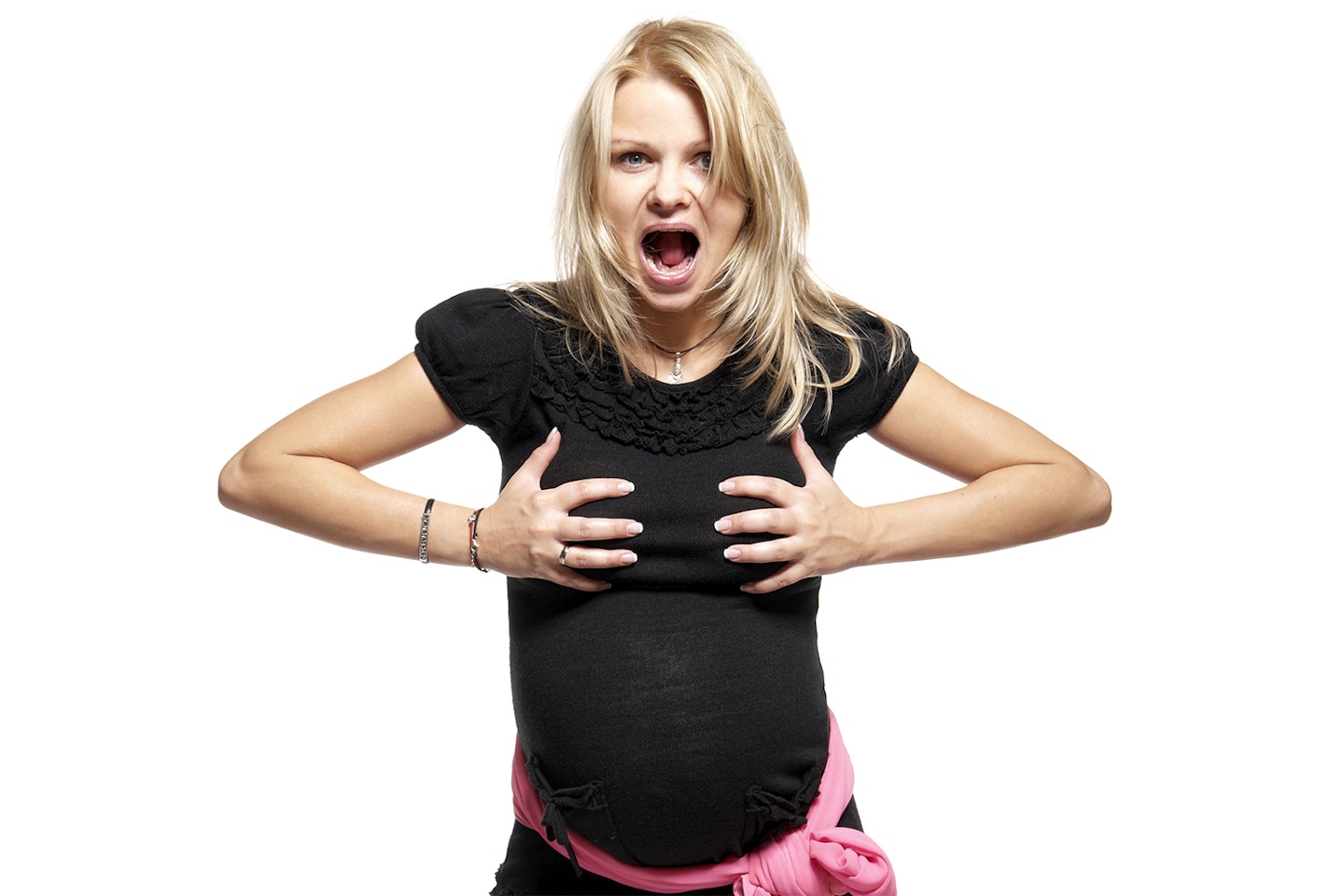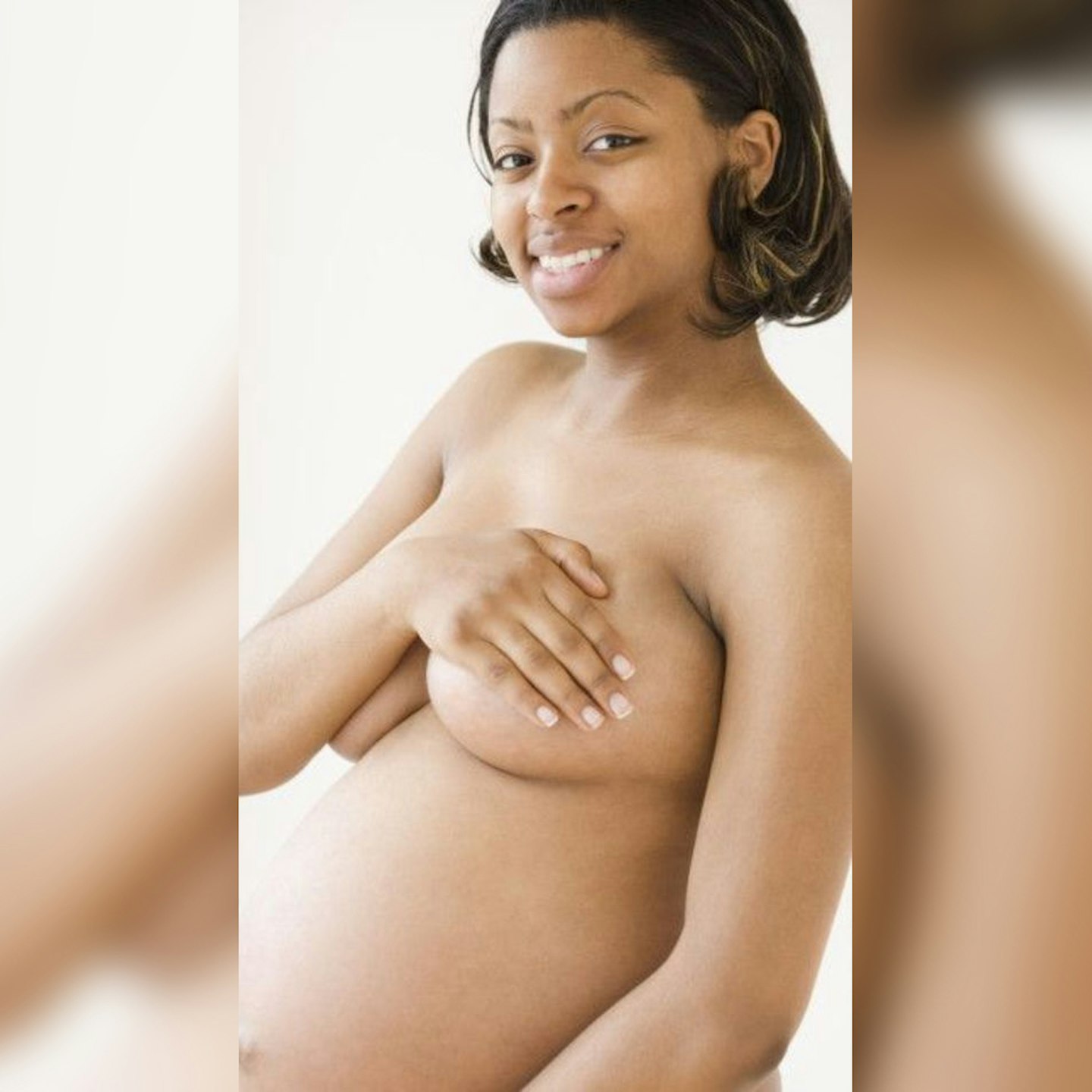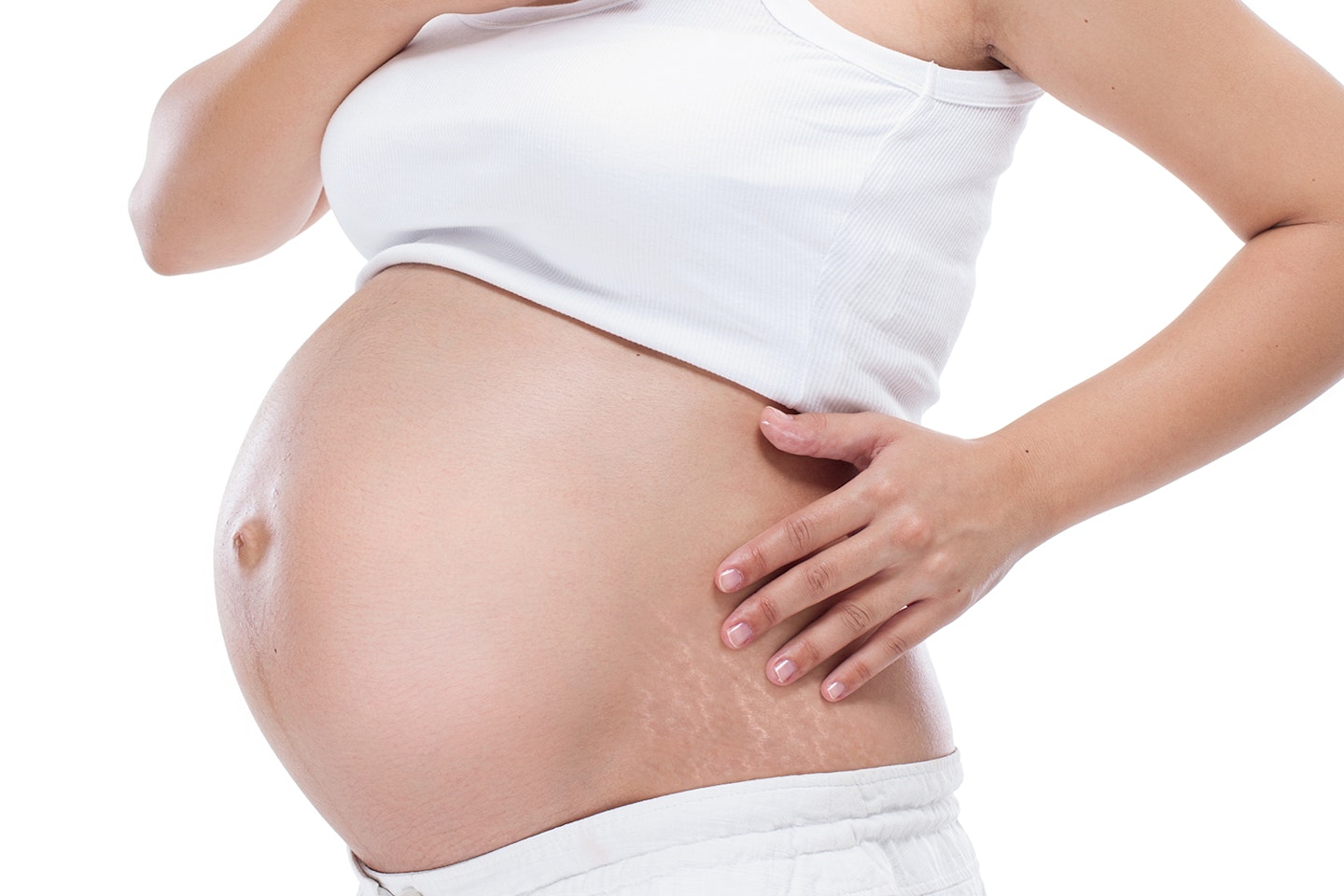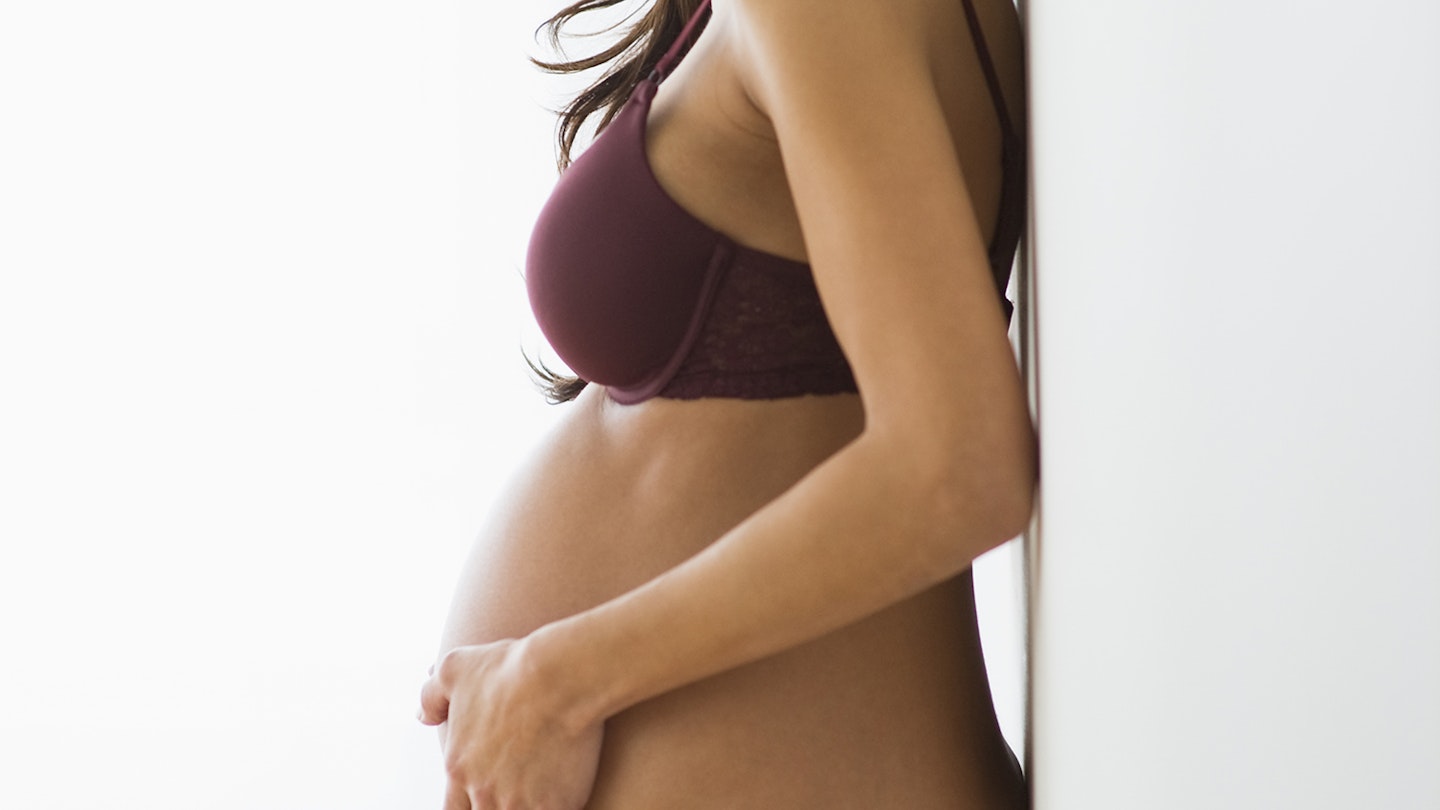Purple nipples, yellow discharge, darker veins & more: Here’s what really happens to your breasts during pregnancy
We all know that your body goes through a lot of changes during pregnancy, but there are some things that people forget to tell you.
In this instance, it's all about the boobs.
What exactly can you expect to happen to your breasts and nipples during the nine months you are carrying your precious baby?
Ladies, here are the main boob changes to watch out for...
WATCH: What will happen to my body during pregnancy? (Credit: NHS Choices)
1) Your breasts will become sore and tender
Thanks to rapidly increasing levels of oestrogen and progesterone, breasts become extremely tender during pregnancy - particularly during the first trimester.
To help ease discomfort, try wearing a well-fitting maternity bra, avoid underwired bras, and wear a cotton bra to sleep in.
2) Your breasts will get bigger
Women commonly find that their breasts grow by at least one or two sizes during pregnancy - just think of it as a free, albeit temporary, boob job.
Your breasts may start to grow as early as week six, and this growth will continue to the end of the pregnancy, although it's likely they'll be as big as they get by the end of your first trimester which is when to go shopping.
It's certainly worth investing in some maternity bras (which can also double up as nursing bras if you're planning on breastfeeding). Your ribcage expands to make room for the baby too, you may find that you need to shop for a bigger band size as well as a bigger cup.
Make sure you buy a well-fitted bra, to support your bigger boobs as much as possible.

3) Your breasts will be itchy
Due to the growth of your breasts, your skin will stretch - and it may become very itchy as a result.
Speaking with Mother & Baby, Dr Dib Datta said: "This growing can cause your breasts to become really itchy. This is because the skin is stretching and can mean that you are left with stretch marks."
Take a little time each day to gently massage your breasts with a cream or oil that's especially for pregnant skin; the more moisturised they are, the less likely they are to feel dry and itchy.
Avoid using soap directly on the areola and nipples. This can dry the skin and can wash away the protective oils secreted by the Montgomery glands.
4) Your nipples will change colour
Around week six of your pregnancy, you will notice that the areolae - the area of your skin around the nipples - starts to darken in hue. This will continue throughout pregnancy (women with darker hair and complexions generally experience more noticeable changes).
This is due to an increase in hormones and natural pigmentation, and is believed to be nature's way of making the nipples easier for babies to find during feeding.
5) Your nipples will become bumpy
There are lots of little bumps on your areolas already, but you probably haven't noticed them before.
During pregnancy, however, these bumps, which are a type of oil-producing gland called Montgomery's tubercles, may become much more pronounced. Many women describe them as looking a lot like goosebumps.
Don't worry, it's all part of the package; your breasts are going through these changes in preparation for nursing your baby.

6) Your nipples will get MUCH bigger too, and erect
During the middle months of your pregnancy, the nipples and areola can double in size - and may actually stay this way after your baby is born.
The nipples will also become erect, and the skin thicker and stronger, to prepare them for nursing - and this is a good thing, believe us, since babies are NOT gentle with the nipple.
7) Your breasts will become veiny
As you progress through your pregnancy, you may notice that bluish veins become much more visible under the skin of your breasts. This is known as 'marbling'. This is due to the increased blood supply to your breasts.
The effect may be less noticeable on darker skinned women or those who are overweight.
READ MORE
8) Your nipples may begin producing a thick and yellow discharge
As you reach the 16th week of your pregnancy, you may notice that your nipples are producing a thick and yellow discharge which crusts up a little when it dries. This is usually colostrum, a sweet, sticky and highly-nutritious fluid that will feed your baby until your milk comes in a few days after delivery. Colostrum contains sugar, protein and antibodies – in fact, all your newborn's nutritional needs.
Simply pop a breast pad inside your bra to avoid an embarrassing wardrobe faux pas when the leaking occurs.
Head's up; one of the most common triggers for leakage is sex!
9) You may notice blood in your bra
Around the 16th week in your pregnancy, and beyond, you may notice that your nipples occasionally begin leaking blood. But don't be alarmed!This is due to the increased number and sudden growth of blood vessels.
You may also notice drops of blood in your bra; this usually occurs when the sticky colostrum dries, temporarily 'gluing' the nipple to the bra and causing the skin to rip away.
REMEMBER: Although bleeding nipples can be normal during pregnancy, do check with your doctor or midwife at your next check up.

10) You may notice lumps in your breasts
It is important to check your breasts for lumps regularly during pregnancy, as breast cancer is usually oestrogen dependent (meaning pregnancy can greatly accelerate the growth of abnormal cells).
However it is worth remembering that all of the hormones shooting around your body during pregnancy can cause some lumps to form. The most common ones are cysts (fluid-filled sacs), galactoceles (milk-filled cysts) and fibroadenomas (fibrous tissue).
Get your lump checked out by your GP, who will be able to tell you if it needs treatment or not.
READ MORE
This video shows what REALLY happens to a mum's body throughout her pregnancy
11) Your breasts can develop stretch marks
Most women will develop stretch marks on their breast during pregnancy. This is caused by the collagen beneath the skin tearing as it stretches to accommodate your enlarging breasts.
Try using a special stretch mark cream regularly, and keep your breasts moisturised, to minimise this - not everyone gets them so it's worth rubbing in that cream!
12) You may develop a sweat rash
You may find that, towards the end of your pregnancy, you develop an uncomfortable rash around your breasts. This occurs because higher than normal proportion of your blood flow is going to your skin and mucous membranes and their blood vessels have become dilated to accommodate it.
Try getting fitted for another bra, ideally cotton, and talk to your midwife. If it's summer it can be even worse, so stay cool with loose-fitting clothing.
Best products for nipples and breasts during and after pregnancy
Nipple cream
Applying nipple cream to your entire nipple area will help to soothe sore and cracked nipples. The Bennetts Nipple Cream is colour-free and fragrance-free, so suitable for both pregnant and breastfeeding mothers.
Body Balm
Another great product for sore, cracked skin post-pregnancy is the Mixa Cica Repair Balm, which you can use on your face, body and hands. It contains no parabens, fragrance and is hypoallergenic, so it's great for those of you with sensitive skin.
Nipple shields
If your nipples are really sore from breastfeeding, try investing in a nipple shield. Made from soft, thin silicone for increased comfort and milk flow, they are suitable for use during breastfeeding to protect sore nipples.
Maternity bras
Make breast-feeding that little bit easier by investing in some good quality maternity bras. The right bra will help to support your breasts as they're constantly changing shape during and after your pregnancy.
Nursing pads
During your pregnancy, and also shortly after you give birth, you may suffer from leaking from your nipple area. By wearing discreet, comfortable nursing pads you can help to absorb any leaks.
Have we missed anything? Let us know over on Facebook and Twitter.
READ MORE...
What is the unusual DIY toothpaste pregnancy test that everyone is trying?
